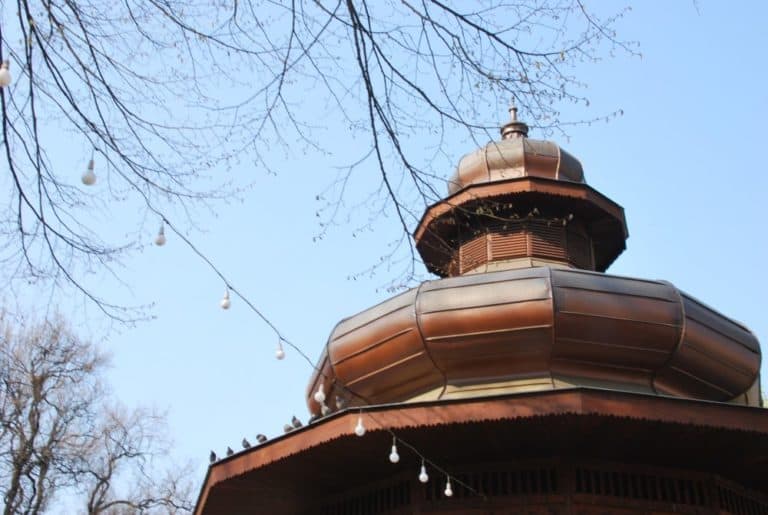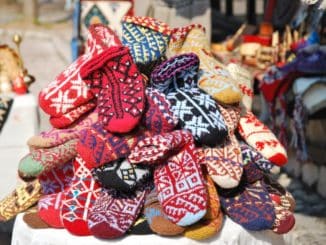Sarajevo
Sarajevo is the capital of Bosnia Herzegovina.
Population. 891,422 according to the 2013 census. The name of the inhabitants is Sarajevans.
Surface Area: 141.5 square kilometres
Altitude: 511 metres above sea level. Some suburbs are up to 900 metres above sea level.
Geographical Position: Sarajevo is located to the south east of the country and is divided in two by a small river, the Miljacka.
Time Zone: GMT +1
Telephone area code: 033
Post Code: 71000
What to see in Sarajevo
Orthodox Churches
Stara Pravoslavna Crkva Svetih Arhandela Mihaila i Gavrila is an ancient Orthodox church. There is no precise evidence as to the exact date of the church’s construction, however, from writings of the time, it is estimated that the church was built around 1539.
The Serbian Orthodox Cathedral which serves those of the Serbian Orthodox faith is built in a baroque style and is one of the largest churches in the Balkans. The church is dedicated to the birth of Christ and was built between 1863 and 1868.
Catholic Christian Churches of worship
The Cathedral of the Sacred Heart of Jesus is commonly known as the Cathedral of Sarajevo or the Katedrala and was built between 1884 and 1889 with a blend of neo-Romanesque and Gothic styles.
The Crkva Sv.Ante is a church that is dedicated to St. Anthony of Padua and was built after the arrival of the Austrians in 1882.
It was initially a small Christian place of worship but, due to structural problems, the building was taken down and, in its place, in 1912, the neo-gothic church which still stands today was built and is connected to a Franciscan monastery that dates back to 1894.
The Church of St. Joseph was built between 1936 and 1940 in the neo-Romanesque style and is located just outside the city centre. Inside the church is the tomb of Ivan Saric, the Archbishop of Sarajevo from the first half of the 20th century, who had not wanted the building to go ahead.
Crkva Svetog Cirila i Metoda is the Church of St. Cyril and St. Methodius which was erected between 1892 and 1896 in the neo-Renaissance style and was the first school for seminarians in Bosnia.
Places of Islamic significance
The Ali Pasha Mosque is a building that was constructed during the period of Ottoman domination between 1560 and 1561 and is built in the classical style of Istanbul with a large dome overlooking the main hall whilst three other domes cover the cloister.
The Mosque was damaged by the Serbian militia in 1990 and was subsequently restored in 2004 to 2005. It is now on the list of Bosnia Herzegovina’s National Monuments.
KING FAHD’S MOSQUE is the largest mosque in Sarajevo which is promoted and financed by Saudi Arabia.
THE EMPEROR’S MOSQUE is one of the oldest mosques in Bosnia dating back to 1462 – 1566 when it was originally built.
THE MOSQUE OF GAZI HUZREV-BEG takes its name from the commissioner and was built by the famous architect of the times, Minar Sinan, in 1530 – 1531 in the classical Islamic style.
Places of Jewish significance
THE SARAJEVO SYNAGOGUE: The building was erected in 1902 in a neo-Moorish style and was consecrated in 1930 and was given to the state in 1966. It was divided into two areas with the first floor being dedicated to the Jewish faith whilst the ground floor became a cultural centre. When the building was actually consecrated, it was the largest synagogue in the Balkans.
THE ANCIENT SYNAGOGUE OF SARAJEVO: The building was erected in 1581 in the Jewish quarter of Sarajevo but was badly damaged in two fires, one in 1697 and the other in 1788. In 1965 the building became used as a Jewish Museum which is very beautiful inside with fine stone walls.
Museums
– The History Museum of Bosnia-Herzegovina
– The Museum of Literature and Theatrical Arts of Bosnia-Herzegovina
– The Jewish Museum
– The National Museum of Bosnia Herzegovina
– The War Childhood Museum
– The Ars Aevi Museum of Contemporary Art
However, Sarajevo is not just about museums, churches and cathedrals.
Visitors cannot avoid walking through the typical streets where, just a couple of decades ago, the siege which lasted for 4 years had driven the local population to both hunger and despair.
There are many places in the city that still carry the scars of their terrible past, such as:
The “Roses” of Sarajevo which, sadly, are not flowers but small concrete craters that resulted from the mortar shells that fell along the city’s streets and which were subsequently painted red, the colour of roses but also the colour of blood, in memory of those who fell during a war between brothers.
Unfortunately, there are many of these testaments to a terrible past to be seen as you stroll through the city’s streets.
Another place that is definitely worth a visit is the Museum of War which is where the Salvation Tunnel begins.
This is a tunnel that leads from a private residence which has now been turned into a museum and ends in an area which is near the airport.
This was the only means for the city’s inhabitants to source supplies of the basic necessities and the only access route for the supply of smuggled weapons as well as being the only escape route out of the city.
The tunnel was dug out by the Bosnians during the siege of the city stretching 800 metres and was travelled daily by hundreds of people and vital supplies.
At the present time, only 18 metres of the tunnel are open to the public but this is enough to provide a comprehensive idea of what it must have been like to travel through the tunnel during the siege.
The entrance fee is equivalent to around €5.00 and is situated in Butmir on Tuneli Street No. 1.
It is open daily from 09:00 to 16:00 but cannot be reached via public transport.
Therefore, it is recommended to contact one of the local agencies who arrange excursions for tourists and they will be able to assist with arranging a visit.
The Turkish Quarter which is known as Bascarsija is the most colourful and interesting area of the city which is characterised by its narrow alleys, its markets, stalls, bars, shops and small eateries where you can sample some of the local delicacies.
Somewhere else that should not be missed is the Sarajevo Market which, sadly, is also famous for an attack which took place on the 5th February 1994 in which 68 people were killed and a further 140 were injured.
Nowadays, in addition to being a place that carries sad memories, it is also possible to find local produce from the surrounding countryside which is sold directly by the farmers.
The market is open every day from 08:00 to 17:00 except for Sundays when it is only open until mid-day.
The market is located at No.64 Mula Mustafe Baseskije street in the city centre just behind the Catholic Cathedral.
Another point of interest not to be missed is the Latin Bridge which is the spot where, as marked by a plaque, the assassination attempt on the heir to the Austro-Hungarian throne, Archduke Franz Ferdinand, took place and was the touch-paper that started the First World War.
The Seige of Sarajevo lasted from the 4th April 1992 until the 29th February 1996.
On the 2nd May 1992, the Bosnian-Serb forces completely barricaded the streets accessing the city, thus cutting Sarajevo off from supplies of any kind. The arrival of foodstuffs came to a halt and all the electricity, water and gas supplies were also cut off.
After several vain attempts to enter the city, the assailants positioned themselves in the mountains surrounding Sarajevo and built around 200 bunkers from which they targeted the city with at least 300 bombardments on a daily basis.
The 23rd July 1993 was the day on which the largest number of mortar attacks fell on the city with an estimated 3,777 shells being fired.
The city’s inhabitants were not only continuously bombarded with shells but were also targeted by dangerous snipers who fired on the population without restraint and seemed to have a predilection for targeting children, knowing that the adults would rush to try and rescue them, thus becoming easy targets themselves.
There was an avenue that led from the city to the airport that was given the name “Sniper’s Alley” which, sadly, became infamous because it was monitored by Serbian guns which fired on anything or anyone who dared to try and pass along it.
All the buildings in Sarajevo were hit. There are estimates that 35,000 homes were completely destroyed.
Unfortunately, the National Library was also hit and caught fire resulting in the loss of an invaluable collection of manuscripts.
The intentions were both vile and cruel. People were targeted in places that were regularly frequented such as the stadium, the hospitals and the few fountains where limited supplies of water could still be found.
The market was subjected to the most furious bombardments and has earned a place in the history books for the Markale Massacre in which 68 civilians were killed and an inexact number of people were injured – it is assumed these were in excess of 100.
After this atrocity, the U.N., shocked by the violence and severity of the attack, gave the Serbian troops an ultimatum: that if they didn’t stop the bombardments they would be subjected to aerial attacks. The attacks did diminish somewhat in their intensity but, they certainly didn’t stop completely.
The Serbs response to the U.N. ultimatum was to target a weapons store belonging to the latter.
As a result of this, the U.N. attacked the weapons stores and other strategic points belonging to the Serbian army which thus started “Operation Deliberate Force.” The clashes became more intense and bloody.
The Serbs lost territory and Sarajevo eventually had access once again to electricity, water and gas supplies.
In October 1995, there was finally a cease-fire, thanks to the Dayton Agreement and in the same year, both peace and new borders were established.
The Seige of Sarajevo cost the lives of an extraordinary number of victims. Subsequent investigations talk of 12,000 dead and more than 50,000 injured, of which, 85% were civilians.
Very nice hand knitted goods
[ Apr.2009 ] There are lots of nice crafts in Bosnia and Herzegovina. Hand knitted goods are one example. The traditional colourful socks are very pretty as you can see in the photo, but I…


